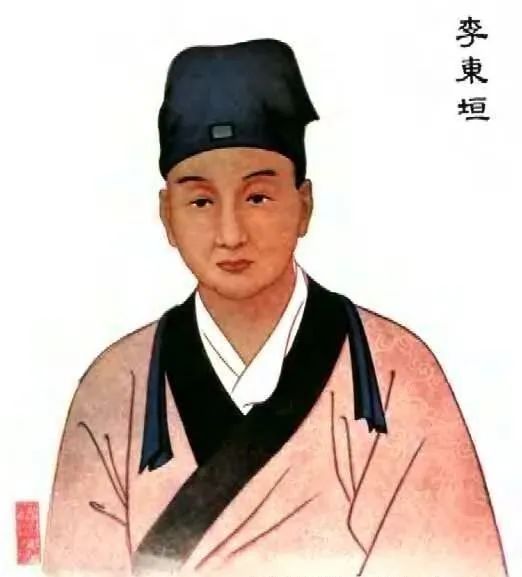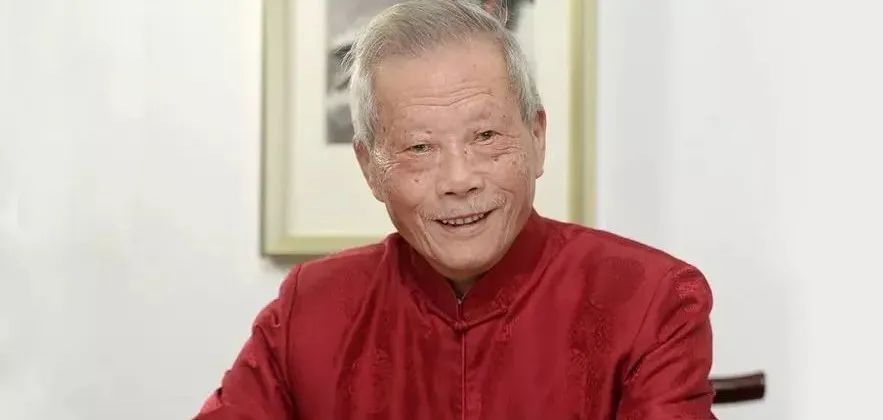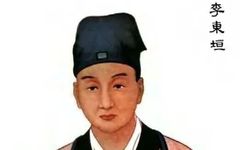Li Dongyuan, a renowned physician of the Jin Dynasty and one of the Four Great Masters of the Jin and Yuan Dynasties, authored works such as On Internal and External Injuries, On the Spleen and Stomach, The Secret Repository of the Orchid Chamber, Medical Inventions, and Essentials of Living. Li Dongyuan pioneered the theory of internal injuries and the pathology of spleen and stomach diseases, which has had a profound impact on later generations. The author provides a preliminary overview of Li Dongyuan’s theory of internal injuries based on relevant writings.

# Internal and External Injuries #
The On Internal and External Injuries is Li Dongyuan’s core work, in which he constructs a grand theoretical framework, formally introducing the concept of internal injuries and distinguishing it from externally contracted diseases. The significance of differentiating internal injuries from externally contracted diseases lies in the understanding that “external pathogens such as wind and cold, and the six excesses, are diseases of excess that should be purged rather than supplemented; diseases of insufficient middle qi should be supplemented rather than purged. Many physicians worldwide mistakenly treat dietary irregularities, injuries from overwork, and insufficient middle qi as external wind-cold or excess pathogen diseases, excessively purging the exterior, leading to death within a few days.” Li Dongyuan elaborates on the differences between externally contracted diseases and internal injuries through thirteen differentiations, including the differentiation of yin and yang, pulse diagnosis, and the assessment of cold and heat, among others. The first differentiation is between yin and yang, where Li Dongyuan laments, “It is indeed critical to detail the signs of yin and yang.” His theory is rooted in the basic framework of yin and yang from the Inner Canon, where yang is external and yin is internal. Externally contracted diseases are characterized by exterior excess cold syndromes caused by external pathogens, treated with methods such as sweating, vomiting, and purging as represented in the Treatise on Cold Damage; internal injuries arise from dietary irregularities, overwork, and excessive emotions leading to deficiency of qi and blood, resulting in abnormal rising and descending of qi, characterized by internal deficiency and mixed excess and deficiency.
Li Dongyuan’s theory of internal and external injuries reminds us in clinical practice not to hastily apply warming and dispersing herbs or bitter cold purgatives upon observing external symptoms, as these symptoms may not necessarily indicate an externally contracted disease. Li Dongyuan states, “If a disease of internal deficiency is mistakenly treated as an excess disease and purged, it will only exacerbate the deficiency… One should use sweet and warming agents to nourish the interior, raise the yang, and sweet and cold agents to drain the fire for recovery. The Inner Canon states: ‘Those who labor should be warmed, and those who are deficient should be warmed.’ Hence, the Renowned Formula for Supplementing Middle Qi…” This indicates that internal injuries differ from externally contracted diseases, and treatment should not excessively purge the exterior but should primarily use sweet and warming herbs to nourish and support, while also regulating the rising and descending of qi. In the internal injury system constructed in the On Internal and External Injuries, Li Dongyuan categorizes formulas into two main types: one represented by the Renowned Formula for Supplementing Middle Qi, including Clear Summer Heat and Supplement Qi Decoction, Raise Yang and Benefit Stomach Decoction, Angelica Blood Supplementing Decoction, and Ginseng and Atractylodes Regulating Decoction, focusing on tonifying deficiency; the other represented by the Zhizhu Pill for treating distension, including Jujube Peel Zhizhu Pill, Three Huang Zhizhu Pill, Zhishi Daodi Pill, and Shang Er Huang Pill, focusing on resolving food stagnation and regulating qi.
In the Secret Repository of the Orchid Chamber, there are two sections titled On Injuries from Diet and On Injuries from Labor, which detail the pathogenesis of internal injuries caused by diet and overwork, directly reflecting Li Dongyuan’s approach to herbal formulation.
Dietary Injuries The On Injuries from Diet states: “Drinking refers to water, which is formless qi. Excessive drinking causes qi to rebel, and cold drinks harm the lungs, leading to symptoms such as wheezing, coughing, swelling, and diarrhea.” Drinking is a cold yin pathogen that can easily obstruct yang qi, causing qi stagnation. Particularly, the Inner Canon mentions, “Cold drinks harm the lungs,” leading to external symptoms, joint pain, and even cough, wheezing, and metabolic disorders of fluids. For treatment, Li Dongyuan employed methods such as sweating, promoting urination, and purging water. He stated, “For mild cases, one should induce sweating and promote urination to disperse dampness. Decoctions like Jie Cheng Decoction, Wuling Powder, and ingredients like ginger, pinellia, bitter orange, and white atractylodes are appropriate,” and “For severe cases with accumulation, herbs like Yuanhua, Jiji, Gansui, and Qian Niu Zi should be used to promote downward movement; this is the treatment method.” This illustrates Li Dongyuan’s adept use of wind-dispelling and diuretic herbs in his formulations for internal injuries, with common wind-dispelling herbs including Qiang Huo, Du Huo, Fang Feng, Chuan Xiong, Man Jing Zi, Xi Xin, Ge Gen, and Chai Hu, represented by formulas like Qiang Huo Sheng Shi Decoction and Chu Feng Shi Qiang Huo Decoction; common diuretic herbs include Fu Ling, Zhu Ling, and Ze Xie, represented by Ge Hua Jie Cheng Decoction.
Food Injuries The On Injuries from Diet states: “Overeating causes the sinews to become slack, leading to intestinal masses and hemorrhoids… If the pulse at the cun position is two to three times larger than at the renying position, it may indicate vomiting, distension, or diarrhea.” Overeating injures the stomach, causing the spleen and stomach to lose their ability to regulate, resulting in symptoms such as vomiting, distension, and diarrhea. The phrase “the cun pulse is two to three times larger than the renying pulse” refers to the Taiyin disease in the Inner Canon, where Li Dongyuan uses this to indicate spleen and stomach diseases. In treatment, Li Dongyuan proposed, “One should differentiate between cold and heat, light and heavy, treating light cases with internal resolution and heavy cases with purging.” He also stated, “For food stagnation from cold, use herbs like Ban Xia, Shen Qu, Gan Jiang, San Leng, Guang Zhu, and Ba Dou; for food stagnation from heat, use Zhishi, Bai Zhu, Qing Pi, Chen Pi, Mai Ya, Huang Lian, and Da Huang; there are also cases suitable for vomiting, as stated in the Great Treatise on Yin and Yang: ‘Those above should be expelled by the gourd seed powder.'” This indicates that food stagnation should be differentiated by cold and heat, with light cases treated by resolving food stagnation and heavy cases treated by purging, and for those above, vomiting should be induced, with cold accumulation treated by resolving food stagnation and supporting the spleen, while heat accumulation should be treated by resolving food stagnation with bitter cold herbs.
Injuries from Labor
The On Injuries from Labor states: “The Regulating Menstruation chapter states: ‘Yin deficiency leads to internal heat.’ Qibo said: ‘With labor, the body and qi weaken, the qi of grains is insufficient, the upper jiao does not function, the lower abdomen is obstructed, and the stomach qi becomes hot, causing internal heat.’ The On Pain states: ‘Labor consumes qi, leading to shortness of breath and sweating, affecting both internal and external, thus qi is consumed.’ Excessive emotions, irregular living, and labor injuries all deplete qi, leading to a decline in qi and an increase in fire, which then invades the spleen, which governs the four limbs, resulting in fatigue, lack of energy, and restlessness.” Here, Li Dongyuan elaborates on the pathogenesis of labor injuries and the origin of yin fire, citing the Inner Canon where “Yin deficiency leads to internal heat,” believing that after labor, qi and blood become deficient, unable to promote the movement of qi, leading to abnormal rising and descending of the spleen and stomach, resulting in internal heat. Here, fire refers to deficiency fire, where the more qi declines, the more fire increases, manifesting as shortness of breath, fatigue, spontaneous sweating, and restlessness. In treatment, Li Dongyuan proposed, “During the illness, it is advisable to sit quietly to nourish qi. Use sweet and cold herbs to drain heat, sour herbs to restrain scattered qi, and sweet warming herbs to nourish the interior. The classics state that those who labor should be warmed, and those who are deficient should be warmed. The Essential Prescriptions from the Golden Cabinet states that a normal pulse is greatly laborious, and an extremely weak pulse also indicates labor. The pulse of labor is floating and large, with hands and feet feeling hot, more severe in spring and summer, and recovering in autumn and winter. This can be treated with Huang Qi Jian Zhong Decoction, which also implies warming.” This indicates that treatment should focus on sweet warming tonification to address the root cause, often using Huang Qi, Dang Gui, Ren Shen, Roasted Gan Cao, and Fried Bai Zhu, while also incorporating sweet and cold flavors to clear heat, such as Mai Dong, Zhi Mu, Huang Bai, and Sheng Di, and using sour herbs to restrain scattered qi, such as Wu Wei Zi and Mu Guo, similar to the Huang Qi Jian Zhong Decoction, with Li Dongyuan’s representative formulas being Renowned Formula for Supplementing Middle Qi and Clear Summer Heat and Supplement Qi Decoction.
Regarding the similarities and differences between dietary and labor injuries, Li Dongyuan summarizes in the On the Spleen and Stomach: On the Strength and Weakness of the Spleen and Stomach: “The stomach is the strength of the spleen, and the spleen is the softness of the stomach, which refers to their interrelation. Irregular diet first harms the stomach, and the spleen subsequently suffers; overwork first harms the spleen, which then cannot regulate the stomach. Although the order of disease onset differs, the pathogens received are the same.” Dietary injuries primarily affect the stomach, while labor injuries primarily affect the spleen; dietary injuries are primarily excess in nature, while labor injuries are primarily deficient; dietary injuries tend to use expelling herbs, such as wind-dispelling, diuretic, food-resolving, bitter cold, and warming herbs; labor injuries tend to use tonifying herbs, such as qi tonics, spleen tonics, yin tonics, astringent herbs, and herbs that strengthen yin. In clinical practice, dietary and labor injuries often occur together, and the combination of these two categories of herbs constitutes the majority of Li Dongyuan’s commonly used formulas. A weak and slow pulse at the right guan position is the fundamental pulse for internal injuries and spleen and stomach diseases. Based on this, different accompanying symptoms such as wiry pulse, large pulse, floating and rough pulse, and deep and fine pulse can be categorized into liver spleen and stomach diseases, heart spleen and stomach diseases, lung spleen and stomach diseases, and kidney spleen and stomach diseases, with corresponding adjustments made by adding wind-dispelling herbs, clearing heart fire herbs, clearing lung heat, and tonifying qi herbs, as well as draining kidney water and clearing hidden fire.
Li Dongyuan constructed a comprehensive system of internal injuries through the differentiation of internal and external injuries, dietary injuries, and labor injuries. Externally contracted diseases are primarily attributed to Zhang Zhongjing, while internal injuries are attributed to Li Dongyuan. The internal injuries discussed by Li Dongyuan generally fall under the category of Taiyin diseases, with some cases of Shaoyang diseases, where external labor depletes qi and internal dietary stagnation occurs. For external conditions, tonification and restraint are appropriate, while for internal conditions, dispersal and descent are appropriate. This is similar to the formulas in the classics such as Huang Qi Jian Zhong Decoction, Gui Zhi Jia Shao Yao Decoction, Gui Zhi Jia Da Huang Decoction, and Xiao Chai Hu Decoction. On this basis, Li Dongyuan created many famous formulas, enriching the TCM system of differentiation and treatment. Due to the social background of material scarcity, frequent wars, irregular eating patterns, and the suffering of the people, there emerged a large number of internal injuries from dietary and labor causes. Observing modern dietary habits, there is a strong tendency towards either rich and sweet, spicy, or cold and cool foods, along with irregular eating patterns, which leads to dietary injuries; disordered living and high stress levels lead to labor injuries. Therefore, Li Dongyuan’s theory of internal injuries still holds significant clinical relevance today and is worthy of in-depth study and exploration.
(Source: China Traditional Chinese Medicine News, Author: Zhen Weishuai, People’s Hospital of Lixia District, Jinan City, Shandong Province)

Recommended Reading

Classic Gynecology Course – Longjiang Han’s Gynecology and the Academic Thoughts and Clinical Experience of National Renowned TCM Expert Professor Han Yanhua


Master Mei Guoqiang’s Application of Chai Hu Wen Dan Decoction in Clinical Practice


Ten Methods of TCM Differentiation and Treatment for Depression



